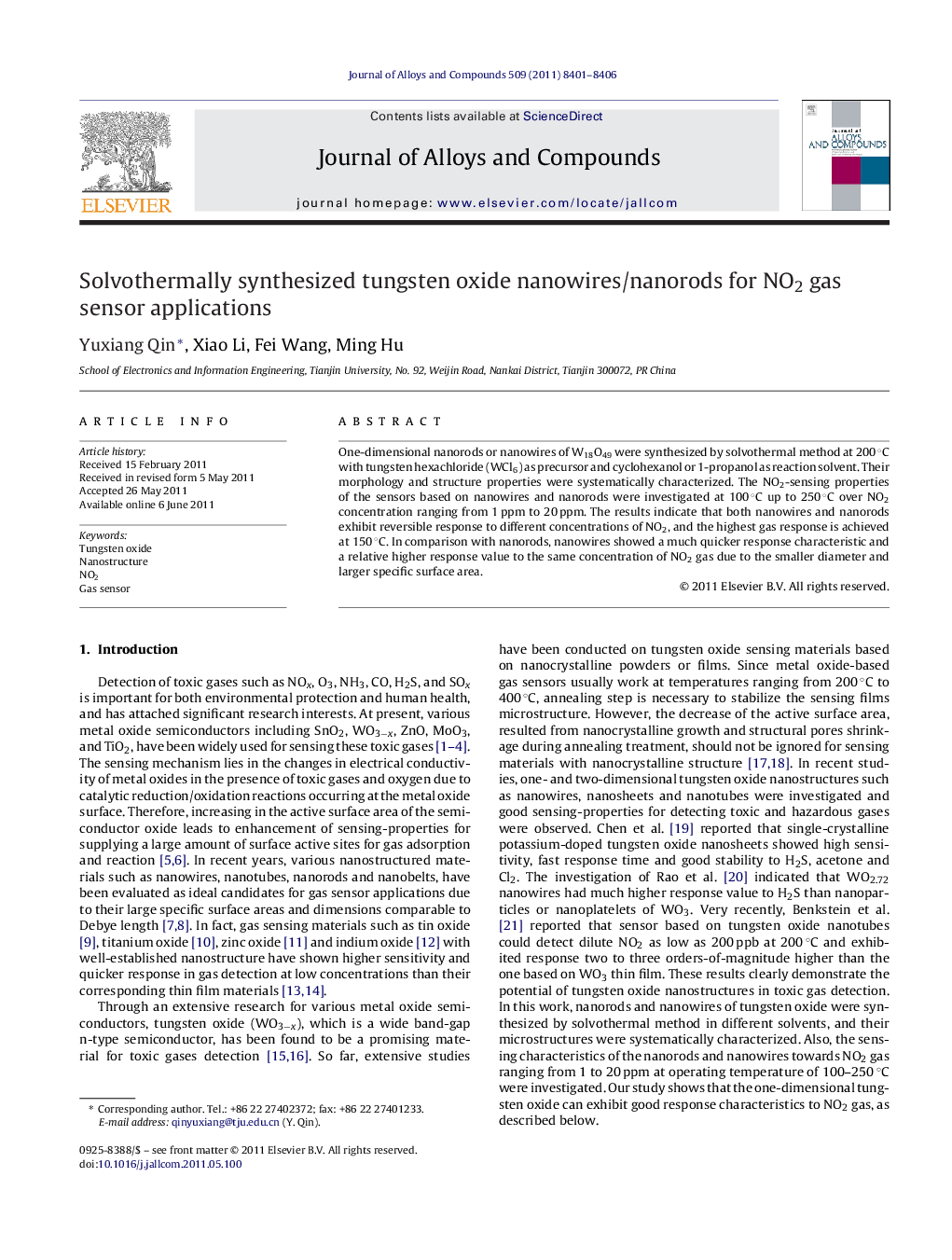| Article ID | Journal | Published Year | Pages | File Type |
|---|---|---|---|---|
| 1617115 | Journal of Alloys and Compounds | 2011 | 6 Pages |
One-dimensional nanorods or nanowires of W18O49 were synthesized by solvothermal method at 200 °C with tungsten hexachloride (WCl6) as precursor and cyclohexanol or 1-propanol as reaction solvent. Their morphology and structure properties were systematically characterized. The NO2-sensing properties of the sensors based on nanowires and nanorods were investigated at 100 °C up to 250 °C over NO2 concentration ranging from 1 ppm to 20 ppm. The results indicate that both nanowires and nanorods exhibit reversible response to different concentrations of NO2, and the highest gas response is achieved at 150 °C. In comparison with nanorods, nanowires showed a much quicker response characteristic and a relative higher response value to the same concentration of NO2 gas due to the smaller diameter and larger specific surface area.
► Tungsten oxide nanowires and nanorods were solvothermally synthesized by changing reaction solvent. ► The sensing characteristics of the tungsten oxide nanowires and nanorods sensors to NO2 gas were evaluated in detail. ► The response time and recovery time for the nanowires or nanorods sensors are much shorter than the oxide nanoparticles or sputtered films. ► The nanowires sensor shows a much shorter response time and a relative higher response value to NO2 gas than the nanorods one. ► The NO2-sensing mechanism and the possible reason for the better gas sensing properties of the nanowires are analyzed.
